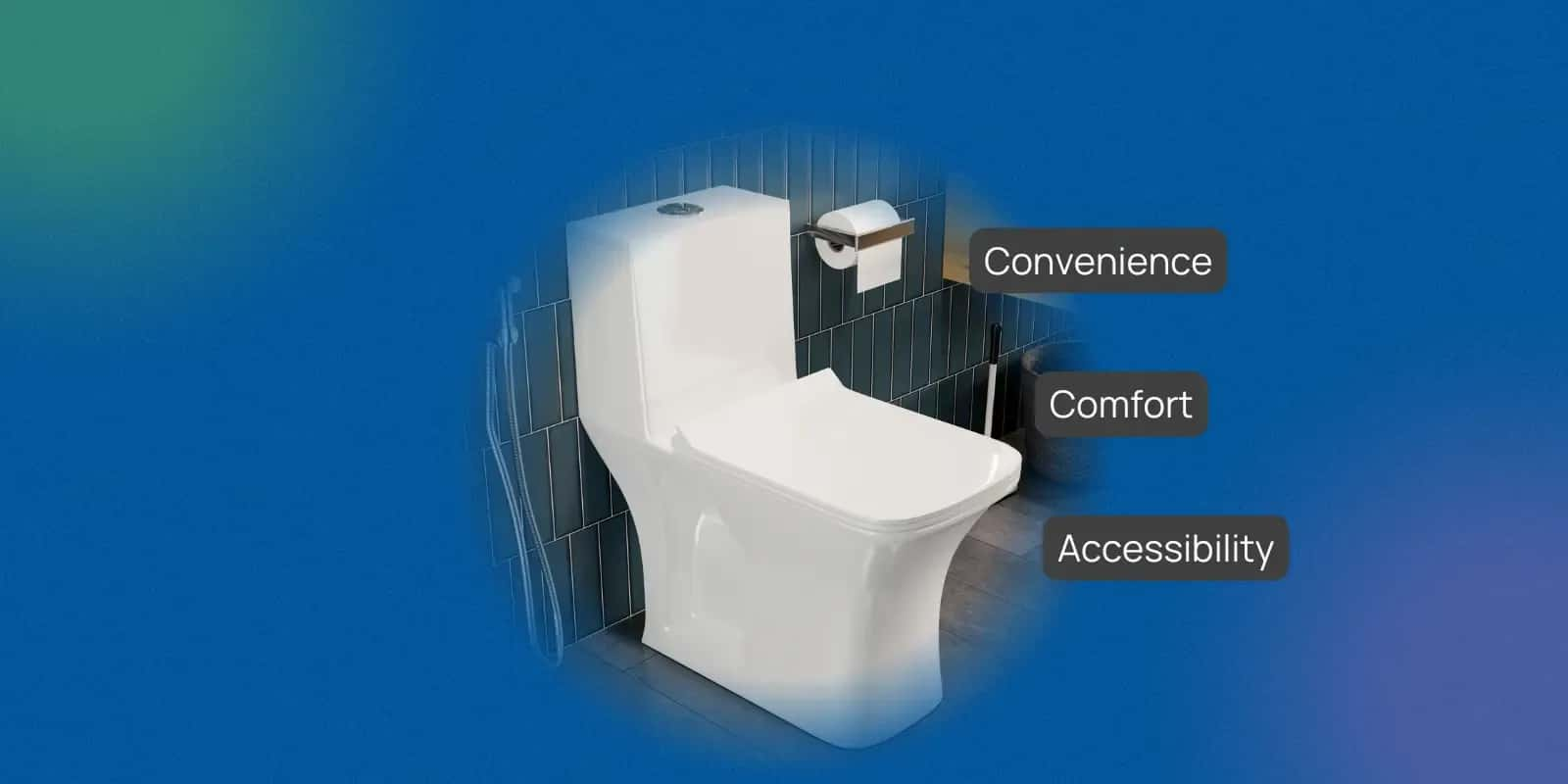Best Pooping Position: Indian vs Western Toilet


Introduction
While choosing between Western and Indian toilets, did you know that your sitting position can impact your digestion, reduce strain, and improve overall health?
Understand the toilet types in India, the difference in positions on western and Indian toilets, western vs Indian toilets, how to convert a western toilet to an Indian toilet, how to use a western toilet in Indian style, and answer the question: How to poop in a western toilet.
Toilets are something we use every day, but did you know that they can affect your health? The two main types of toilets in India are Western-style and Indian-style.
Both are extremely common, but they have very different effects on the body. Your position on the toilet can affect your digestion, muscle strength, and even help prevent specific health issues.
Choosing between a Western and Indian toilet involves more than just preference; it's about considering health, hygiene, and comfort.
In this blog, we will explore the types of toilets in India, western vs Indian toilets, how to use a western toilet in Indian style, and finally, how to poop in a western toilet.
Western Toilet Sitting Position: Pros and Cons for Your Health
Western-style toilets have gained popularity in India in recent years. Earlier, western toilets were only seen in homes with elderly residents, as they are convenient for them and for people with brittle bones.
The Western toilet sitting position avoids stress on the knees and back. These toilets offer more comfort than traditional Indian toilets, with a sitting position that is more accommodating for people with mobility issues.

Experts say that the Western toilet sitting position is easy on the hips and back, and helps prevent falls and fractures. These are especially beneficial for individuals in the middle-aged and elderly age groups.
However, the western-style sitting position comes with its own set of problems. In the Western-style sitting position, the torso is relaxed, and the thighs do not apply sufficient pressure to the abdomen; hence, the colon is not compressed.
This could lead to indigestion, constipation, and piles (haemorrhoids).
A person’s diet plays a significant role in maintaining smooth bowel movements. Ensuring an adequate amount of fibre and laxatives in your diet helps prevent constipation and indigestion, regardless of the toilet you use.
Indian Toilet Sitting Posture: Why Squatting Could Be Better
The Indian toilet sitting position is more suited for younger adults as it requires flexibility and strength in the limbs. The Indian toilet sitting position comes with advantages and disadvantages.
Indian toilet sitting position involves squatting, which presses the torso against the thighs, making them insert pressure on the abdomen, which results in the compression of the colon. This allows for smooth bowel movement, aids in better digestion, and prevents constipation.
Squatting has a huge advantage over the Western toilet sitting position, as there is no direct contact with the seat. The squatting action also serves as an exercise, improving blood circulation and strengthening leg muscles.
However, the Indian toilet sitting position is not suitable for the elderly or people with brittle bones or compromised mobility due to osteoarthritis, or people recovering from surgeries. Dr Mohan advises not to use the western toilet for more than 20 minutes to avoid stress on the knees.

Converting Western Toilet to Indian Toilet: Practical Tips
For anyone trying to transition from an Indian-style toilet to a Western-style one due to age or medical condition, it will take time, and the transition can be tough.
Hence, it's essential to take small steps. People with difficulties using Western toilets can make use of a small stool to rest their feet. By doing so, you can convert a Western toilet into an Indian-style one.
Takeaways
Choosing the optimal toilet posture is essential for improving digestion and avoiding constipation. The best pooping position ultimately aligns with your physical health, comfort and daily lifestyle.
Whether squatting in Indian style or sitting on a western toilet, adjusting your posture and using simple tools can make all the difference. For healthy digestion, consider modifying your current practices rather than forcing a full switch.

FAQs
Q. Is squatting better than sitting for a bowel movement?
A. Yes, squatting is considered better for bowel movements than sitting. The squatting position on Indian toilets helps to straighten the anorectal angle, which is the bend in the rectum, making it easier for the stool to pass.
Q. How does the Indian toilet help with easier pooping?
A. Indian-style toilets require users to squat and are often associated with easier and more complete bowel movements compared to western toilets. Squatting helps the thighs to create pressure on the abdomen, which leads to pressing the colon and easier stool passage.
Q. Can Western toilets cause constipation or haemorrhoids?
Yes, western toilets can cause constipation and potentially worsen the constipation and cause the development of haemorrhoids. This is mainly due to the sitting position, which can hinder complete and smooth bowel movement.
Q. Are there tools to mimic squatting on a Western toilet?
A. There are certain tools designed to help mimic a squatting position while using a Western-style toilet. These tools, often called toilet stools or squat stools, are designed to elevate the feet and bring the knees higher than the hips to create pressure on the colon, allowing for smooth and complete bowel movement.
Q. Which toilet type is more hygienic overall?
A. Rimless toilets are generally considered more hygienic than rimmed toilets due to their design, which eliminates hidden areas where bacteria can accumulate.
While both western and Indian toilets can be hygienic if maintained properly, rimless designs offer an advantage in terms of ease of cleaning and reduced bacterial build-up.

10 Migraine Misunderstandings That You Need to Clear

10 Health Benefits of Pomegranate

10 Ways of Reorienting With Respectful Parenting

10 Weirdest Myths About Weight Training

7 Yoga Poses to Improve Your Posture and Boost Confidence

